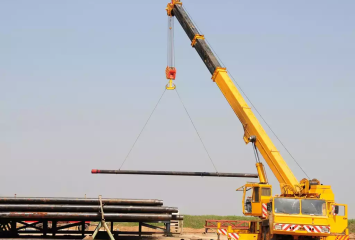
Crane and Lifting Operations Safety
Crane and Lifting Operations Safety Training Course

Crane and Lifting Operations Safety Training Course
The Crane and Lifting Operations Safety Training Course is designed to equip workers, supervisors, and safety officers with the knowledge and skills necessary to safely operate cranes and handle lifting operations in a wide range of industrial environments. This course focuses on the essential safety practices, regulations, and procedures to minimize the risks associated with crane and lifting operations. The goal is to ensure that all personnel involved in lifting tasks understand how to identify hazards, comply with safety regulations, and operate cranes efficiently and safely.
Understand and Comply with Legal Requirements
Recognize the relevant national and international safety standards and regulations governing crane and lifting operations.
Understand the roles and responsibilities of personnel involved in crane and lifting operations.
Identify and Manage Risks
Identify potential hazards associated with crane and lifting operations.
Implement safe work practices to eliminate or mitigate lifting risks.
Understand Crane Types and Equipment:
Identify different types of cranes (e.g., mobile cranes, tower cranes, overhead cranes, etc.) and their operational limits.
Understand the role of lifting accessories such as slings, hooks, shackles, and other rigging equipment.
Perform Pre-Lift Inspections
Understand how to conduct pre-lift checks and inspections on cranes and lifting equipment.
Recognize signs of wear and tear, defects, or malfunctions that could compromise safety.
Safe Lifting Practices
Understand proper rigging techniques and procedures for load lifting.
Learn how to calculate lifting capacity, load weight, and ensure that lifting is performed within safe limits.
Understand Load Control and Communication
Learn effective communication techniques between the crane operator, signal person, and ground crew.
Understand the principles of load control and how to avoid load instability.
Emergency Procedures
Develop knowledge of emergency response procedures during crane malfunctions, load failures, and other emergencies.
Post-Operation Procedures
Understand the proper procedures for securing cranes and lifting equipment after use.
Recognize the importance of regular maintenance and inspection schedules.
Introduction to Crane and Lifting Operations
Overview of cranes and lifting equipment
Importance of crane and lifting safety
Key personnel and their roles (operator, signal person, rigger, etc.)
Regulations and Safety Standards
OSHA and other relevant safety standards (e.g., ASME, ANSI)
Local and international safety regulations and guidelines
Role of safety audits and inspections in lifting operations
Types of Cranes and Lifting Equipment
Mobile cranes, tower cranes, overhead cranes, and hoists
Lifting accessories: slings, shackles, hooks, and rigging gear
Understanding the load capacity of different cranes
Hazards in Crane and Lifting Operations
Common risks and hazards in lifting operations (e.g., swinging loads, load instability, falling objects)
Risk assessment and hazard identification
Mitigating risks through proper planning and safety measures
Pre-Lift Inspections and Safety Checks
Procedures for inspecting cranes and lifting equipment
Identifying mechanical issues, wear, and defects
Inspection of rigging and lifting accessories
Rigging and Load Handling
Proper rigging techniques and equipment use
Load balancing, center of gravity, and safe load handling
Identifying safe lifting points and load stability
Operational Safety and Best Practices
Safe lifting practices and procedures
Understanding crane operation limits and load charts
Operating cranes in adverse weather or challenging environments
Communication and Signal Procedures
Effective communication between crane operators, riggers, and signal persons
Hand signals and radio communication standards
Safety of ground personnel during lifting operations
Emergency Response and Accident Management
Identifying emergency situations and procedures
Procedures for crane failure, load drop, or personnel injury
First aid and accident reporting protocols
Post-Operation Safety and Maintenance
Securing cranes and lifting equipment after use
Maintenance schedules and documentation
Safe storage of lifting equipment and tools
Crane Operators
Riggers and Signal Person
Supervisors and Managers
Safety Officers and Inspectors
Maintenance Personnel
Construction and Manufacturing Workers
Project Engineers and Planners